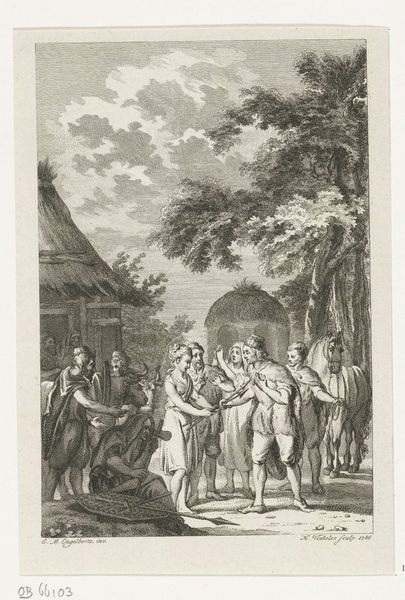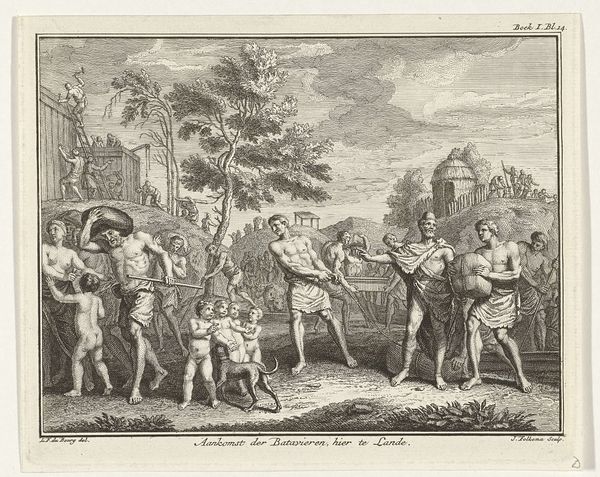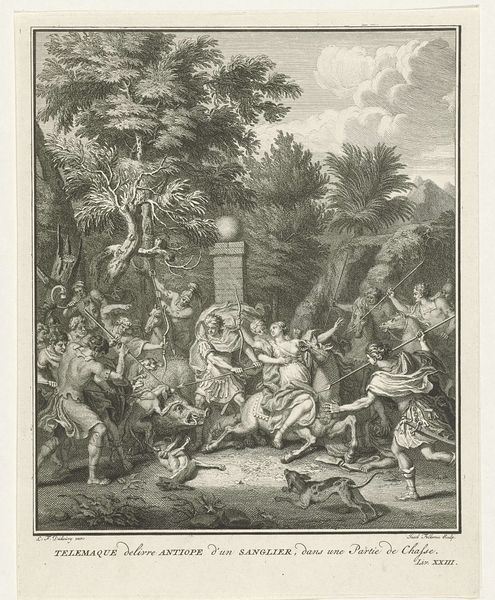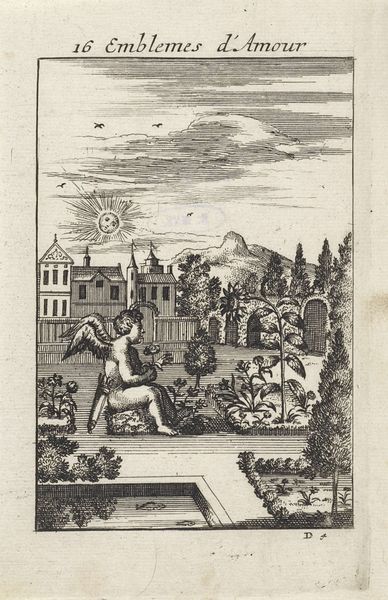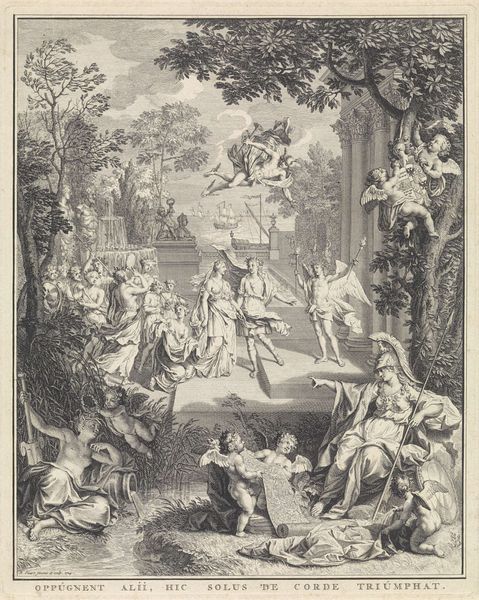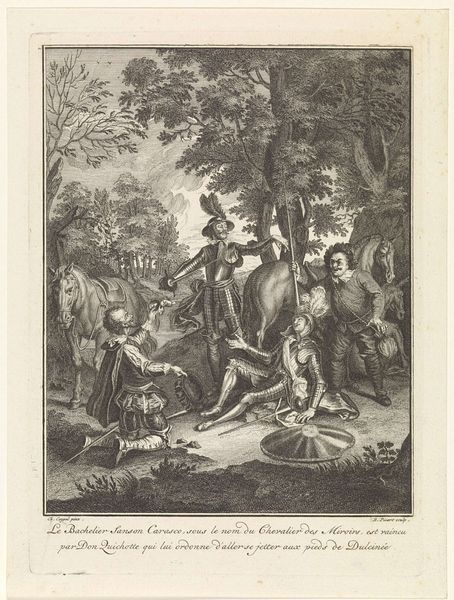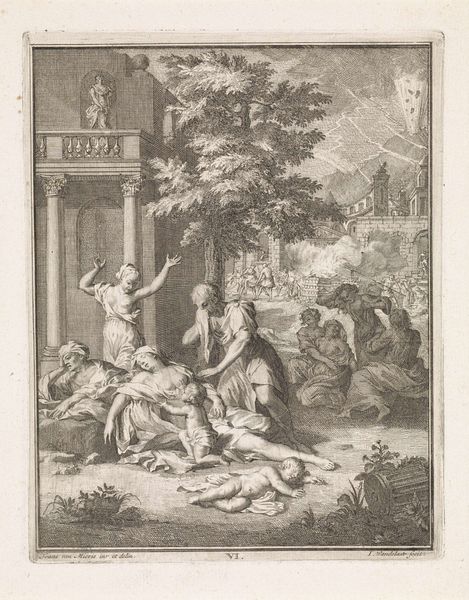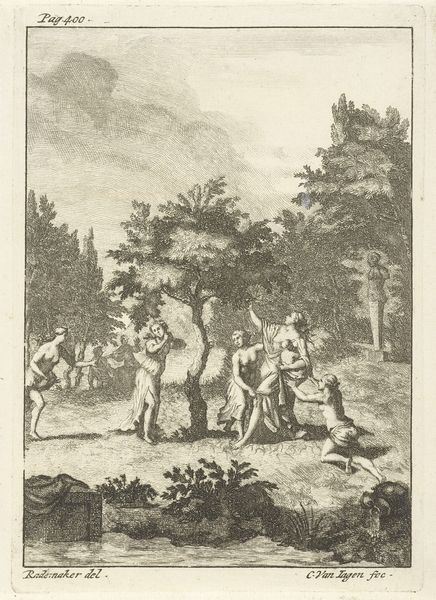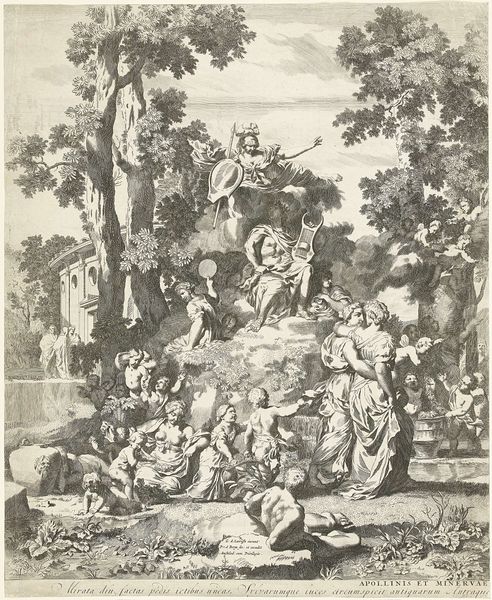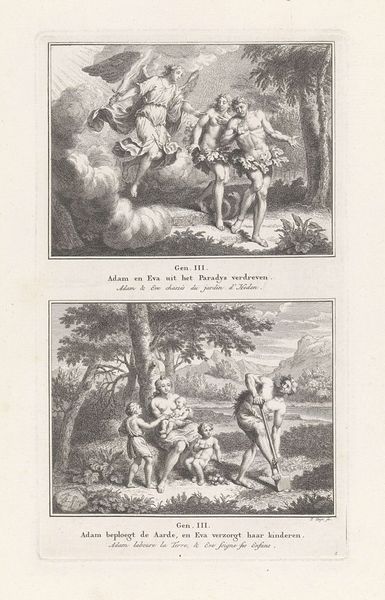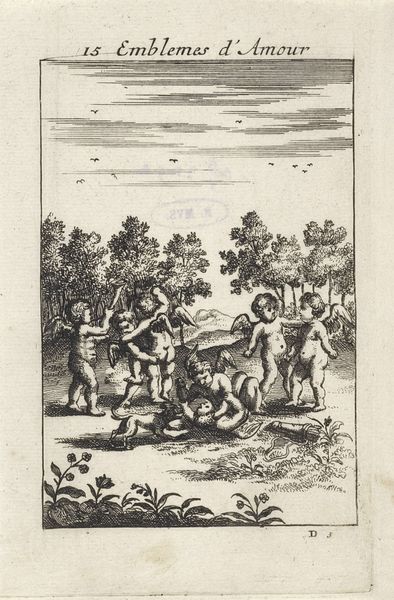
print, engraving
#
garden
#
allegory
#
baroque
# print
#
landscape
#
figuration
#
fruit
#
engraving
Dimensions: height 145 mm, width 95 mm
Copyright: Rijks Museum: Open Domain
Curator: This is Jan van Vianen’s engraving, "Putti met vruchten bij een tuin," dating from 1686. Editor: My immediate impression is one of abundance, and yet it feels a little…contained. The putti and the fruit burst forth, but the formal garden and surrounding structure create a rigid boundary. Curator: That tension speaks volumes, doesn’t it? Consider the baroque period's fascination with allegory. Here, the garden, laden with fruit and mischievous putti, might represent earthly love, but it's love hemmed in by societal constraints and expectations. Editor: Absolutely. And we can see the materiality of it all— the engraving medium itself allows for incredibly fine detail in rendering those abundant fruits and the texture of the putti's skin. The production of the print, its accessibility, makes me wonder about the audience who would consume and interpret this imagery. Curator: Precisely. Who was it for, and what meanings would they have gleaned? The presence of enslaved persons reduced to cameos as decorations on the balustrade, framing this idyllic scene, prompts critical engagement with 17th-century Dutch societal values. How can we reconcile this seemingly innocent depiction with the socio-political structures of the time? Editor: The weaving together of paradise and oppression is sharp and subtle. It speaks volumes about what gets centralized and what remains purposefully unaddressed within a society, as mirrored through its artwork and the conditions of its artistic production. Curator: Looking through a contemporary lens allows us to ask the challenging questions that the image itself doesn’t explicitly pose, unearthing difficult but critical dialogues. Editor: Exactly. This engraving invites us to examine not just the "what" but also the "how" and "for whom"— unveiling hidden aspects of the socio-economic environment and manufacturing of taste and imagery during this time. It compels us to understand that representations, however beautiful, often participate in complex material and social arrangements. Curator: It truly demonstrates how a seemingly straightforward image can open into layered, profound reflections about both art history and our present moment. Editor: It underscores the continued relevance of understanding how power, production, and aesthetics intertwine to shape not just artworks but also the world we inhabit.
Comments
No comments
Be the first to comment and join the conversation on the ultimate creative platform.

